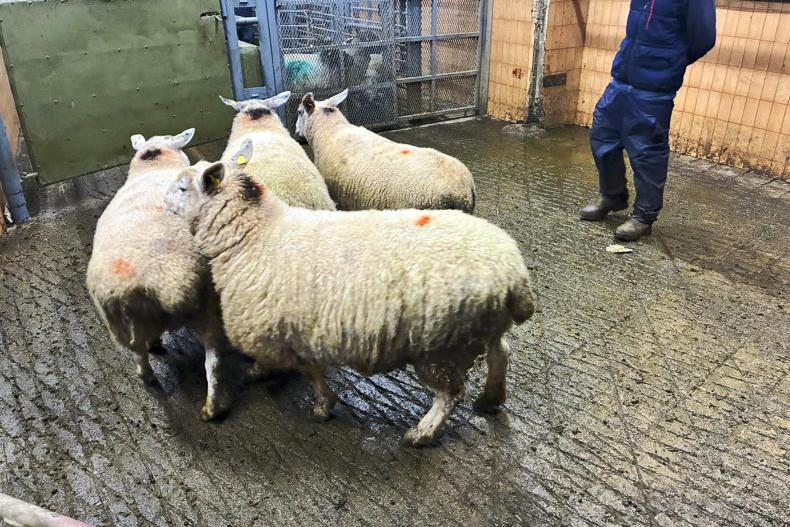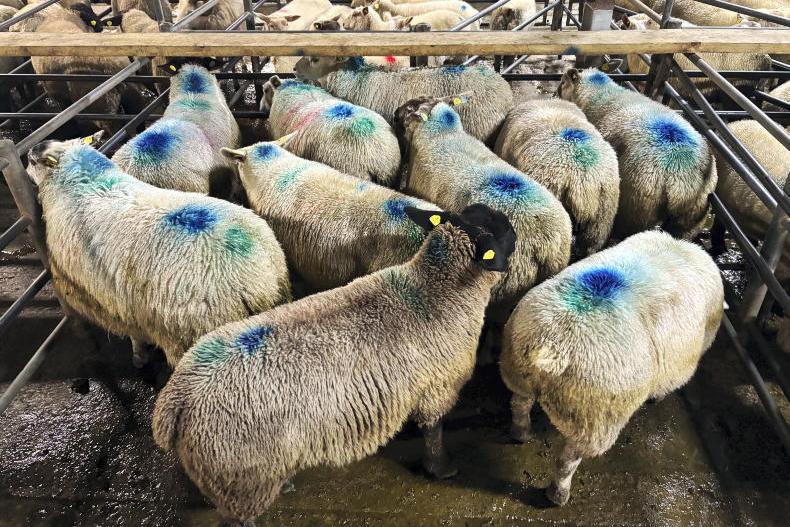Store lamb presentation: Mart managers report the store lamb trade getting off to a strong start, with buyers who did well with the system in 2020 returning with confidence.
While numbers coming on stream are small, there are already strong signs that levels of competition will be much higher for lambs presented in even batches on size, weight, type and gender.
Ideally the range in weight should be within 5kg to command the highest levels of interest and where mixing lambs on gender this should generally be confined to wether and ewe lambs, with ram lambs presented in batches on their own.
Reports indicate there is likely to be strong interest again in ewe lambs with breeding potential.
Some buyers are already exploring the option of purchasing strong ewe lambs early if hogget prices are, as expected, significantly higher than in recent years. As such, it makes sense to present these lambs in uniform batches. Lamb cleanliness also has a role in attracting extra interest, with some buyers willing to pass over store lambs with dirty tail-ends.
Tag retention: The manner in which tags are applied can have a significant bearing on tag retention and also influence the risk of ear infections. With tags now remaining with animals for their lifetime, taking care when applying tags to store lambs and replacement ewe lambs will protect your investment. It is also a factor that some buyers pay heed to in sales.
The advice is to apply button tags midway in the height of the ear, taking care to avoid cartilage which can be seen on the underside of the ear. In terms of distance from the ear, it should be about one-third of the way along the animal’s ear, measuring from the head out. This guide should be altered for breeds with thicker ears as there should be space for the tag to rotate and circulate.
With regards wraparound tags, manufacturers advise to leave about 4mm to 5mm room between the edge of the ear and the tag when applying to take account of future ear growth. They advise to apply wraparound tags at the top of the ear and, similar to a button tag, about a third of the distance out from the head, taking care again not to pierce cartilage.
The male part, which pierces the skin for all tag types, should be applied on the outer part of the ear as this leaves less risk for tags to get caught.
Tagging should be carried out where at all possible on a dry day, with the animal securely restrained. Hygiene is paramount in preventing infections from becoming established.
Dates for diary: The last of three IGA online sheep events focusing on the use of innovative practices to improve efficiency takes place on Thursday 24 June at 8pm.
Scottish farmers Neil and Debbie McGowan, who run 1,200 breeding ewes and 220 suckler cows on 485ha of upland ground are the host farmers. See www.irishgrassland.ie.
Meanwhile, AgriSearch is hosting an online event in partnership with AFBI, CAFRE, AHDB and Sheep Ireland examining how sheep genetics can be better utilised on Northern Irish farms on Monday 28 June at 2pm.
Presentation topics include the financial benefit of using Estimated Breeding Values (EBVs) and a results update on the Ram Compare breeding programme. Registration is via www.agrisearch.org.
Store lamb presentation: Mart managers report the store lamb trade getting off to a strong start, with buyers who did well with the system in 2020 returning with confidence.
While numbers coming on stream are small, there are already strong signs that levels of competition will be much higher for lambs presented in even batches on size, weight, type and gender.
Ideally the range in weight should be within 5kg to command the highest levels of interest and where mixing lambs on gender this should generally be confined to wether and ewe lambs, with ram lambs presented in batches on their own.
Reports indicate there is likely to be strong interest again in ewe lambs with breeding potential.
Some buyers are already exploring the option of purchasing strong ewe lambs early if hogget prices are, as expected, significantly higher than in recent years. As such, it makes sense to present these lambs in uniform batches. Lamb cleanliness also has a role in attracting extra interest, with some buyers willing to pass over store lambs with dirty tail-ends.
Tag retention: The manner in which tags are applied can have a significant bearing on tag retention and also influence the risk of ear infections. With tags now remaining with animals for their lifetime, taking care when applying tags to store lambs and replacement ewe lambs will protect your investment. It is also a factor that some buyers pay heed to in sales.
The advice is to apply button tags midway in the height of the ear, taking care to avoid cartilage which can be seen on the underside of the ear. In terms of distance from the ear, it should be about one-third of the way along the animal’s ear, measuring from the head out. This guide should be altered for breeds with thicker ears as there should be space for the tag to rotate and circulate.
With regards wraparound tags, manufacturers advise to leave about 4mm to 5mm room between the edge of the ear and the tag when applying to take account of future ear growth. They advise to apply wraparound tags at the top of the ear and, similar to a button tag, about a third of the distance out from the head, taking care again not to pierce cartilage.
The male part, which pierces the skin for all tag types, should be applied on the outer part of the ear as this leaves less risk for tags to get caught.
Tagging should be carried out where at all possible on a dry day, with the animal securely restrained. Hygiene is paramount in preventing infections from becoming established.
Dates for diary: The last of three IGA online sheep events focusing on the use of innovative practices to improve efficiency takes place on Thursday 24 June at 8pm.
Scottish farmers Neil and Debbie McGowan, who run 1,200 breeding ewes and 220 suckler cows on 485ha of upland ground are the host farmers. See www.irishgrassland.ie.
Meanwhile, AgriSearch is hosting an online event in partnership with AFBI, CAFRE, AHDB and Sheep Ireland examining how sheep genetics can be better utilised on Northern Irish farms on Monday 28 June at 2pm.
Presentation topics include the financial benefit of using Estimated Breeding Values (EBVs) and a results update on the Ram Compare breeding programme. Registration is via www.agrisearch.org.










SHARING OPTIONS